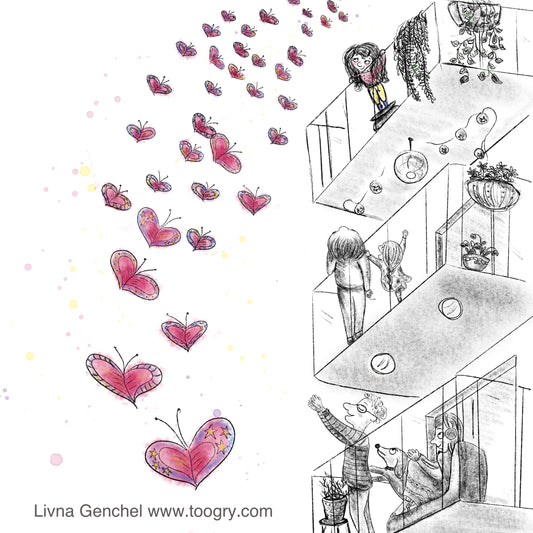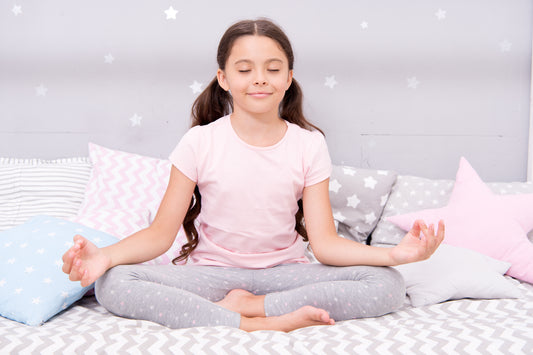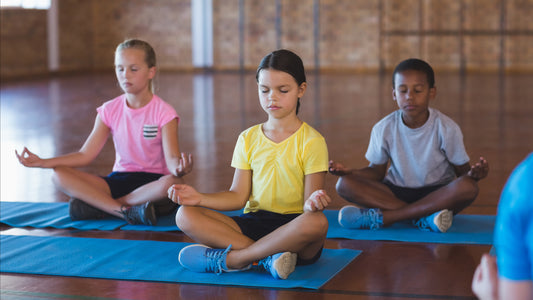Introducing meditation to children at an early age can provide them with valuable life skills, enabling them to navigate the ups and downs of life with greater resilience and self-awareness. As parents and caregivers, we play a crucial role in nurturing a love for meditation in our children, empowering them to discover the transformative power of this practice.
Preparing the Groundwork for Meditation
Before embarking on the journey of teaching kids meditation, it's essential to create a supportive and encouraging environment. Here are some key considerations:
- Age-Appropriateness: Adapt meditation techniques to suit the developmental stage of your child. For younger children, focus on playful and engaging activities, while older kids can explore more structured guided meditations.
- Patience and Understanding: Children learn at their own pace, so be patient and understanding as they explore the concept of meditation. Avoid imposing expectations or creating pressure, as this can lead to frustration and resistance.
- Consistency: Regular practice is key to reaping the full benefits of meditation. Encourage your child to incorporate meditation into their daily routine, even if it's just for a few minutes each time.
Introducing Meditation Through Playful Activities
For preschoolers and young children, meditation can be introduced through playful and engaging activities that capture their imagination and foster a connection with their bodies. Here are some ideas:
-
Mindful Breathing Games: Engage your child in simple breathing exercises, such as blowing bubbles or pretending to be a balloon inflating and deflating or using breathing exercise cards.
-
Guided Visualizations: Use storytelling techniques to guide your child on imaginary journeys, encouraging them to focus on their senses and emotions.
-
Interactive Games: Incorporate mindfulness-based games, such as "Simon Says" or "Follow the Leader," to promote focus and attention.
Exploring Structured Meditation Techniques
As children progress through school, their cognitive and emotional development allows for a deeper understanding of meditation. Guided meditations, coupled with age-appropriate techniques, can provide a more structured approach. Here are some suggestions:
-
Body Scan Meditation: Guide your child through a body scan, encouraging them to focus on sensations in different parts of their body.
-
Loving-Kindness Meditation: Introduce the concept of loving-kindness, encouraging your child to send positive thoughts to themselves and others.
-
Mindful Listening Meditation: Engage your child in mindful listening exercises, encouraging them to focus on sounds around them without judgment.
Enhancing the Meditation Experience
To further enhance your child's meditation experience, consider incorporating these elements:
-
Soothing Music: Play calming and relaxing music in the background to create a peaceful atmosphere.
-
Comfort Items: Provide soft blankets, pillows, or stuffed animals to promote comfort and relaxation.
-
Nature Connection: Meditate outdoors in a natural setting, allowing your child to connect with the sounds and sights of nature.
-
Mindful Movement: Incorporate gentle stretches or yoga poses before or after meditation to promote relaxation and body awareness.
Celebrating Progress and Encouragement
As your child embarks on their meditation journey, acknowledging and celebrating their progress, no matter how small, can provide encouragement and boost their motivation. Here are some tips:
-
Positive Reinforcement: Offer verbal praise and positive affirmations to reinforce their efforts and foster a sense of accomplishment.
-
Creative Expression: Encourage your child to express their feelings and experiences through drawing, journaling, or storytelling.
-
Shared Experiences: Meditate alongside your child, creating a shared experience that strengthens your bond and provides mutual support.
Here are some more tips to teach your child to meditate:
- Keep it simple: When teaching meditation to children, it's important to keep it simple and age-appropriate. Start with short sessions, maybe 5-10 minutes at a time, and gradually increase the duration as your child gets more comfortable with the practice. Here is a guide to meditating with toddlers.
- Make it fun: Children are more likely to engage in activities that are fun and playful. You can make meditation fun by incorporating activities like breathing exercises cards, meditation props, visualization, and games.
- Lead by example: Children often learn best by watching and imitating others. So, it's important to practice meditation yourself and model the behavior you want your child to adopt.
- Find a quiet space: Choose a quiet and peaceful space where your child can meditate without distraction. You can create a designated meditation area in your home, or simply find a quiet spot in a park or backyard. Having a meditation rug to delimitate the meditating space is very helpful.
- Use guided meditations: Guided meditations can be helpful for children who are just starting out with the practice. You can find guided meditations specifically designed for children on YouTube or through meditation apps.
- Encourage regular practice: Consistency is key when it comes to meditation. Encourage your child to practice regularly, even if it's just for a few minutes each day.
Remember, meditation is a journey, not a destination. Each child's path to mindfulness will be unique. By providing a supportive and encouraging environment, we can empower our children to discover the transformative power of meditation and cultivate inner peace that will serve them well throughout their lives.
Find out how to practice meditation with your child during as part of their sleep routine.
To learn about all things meditation for kids, visit our BLOG.




